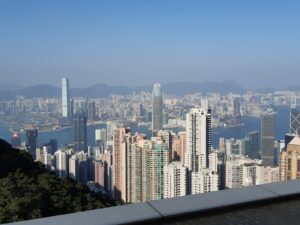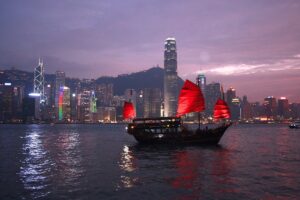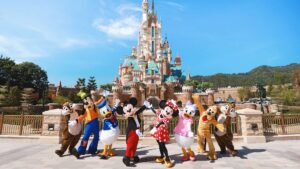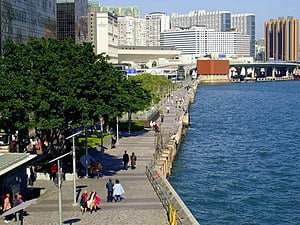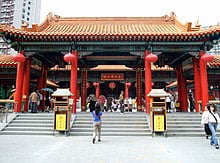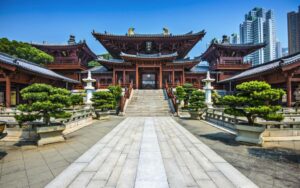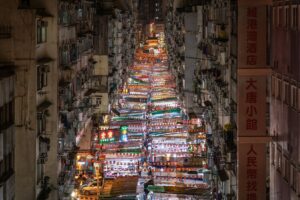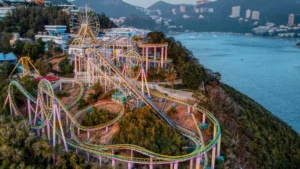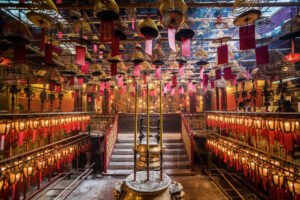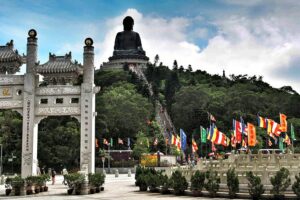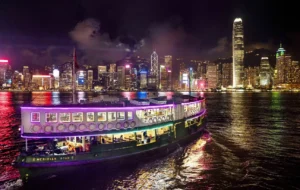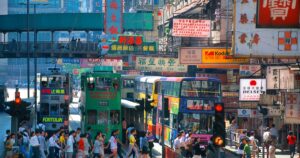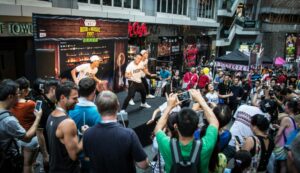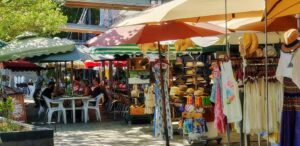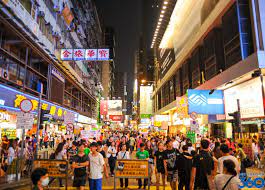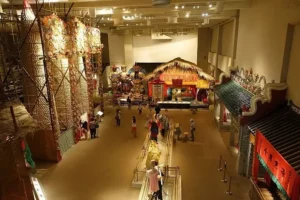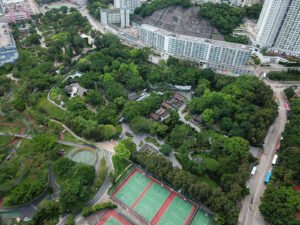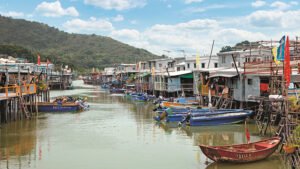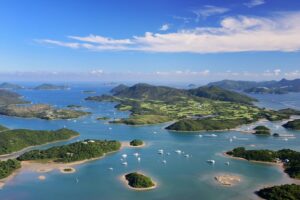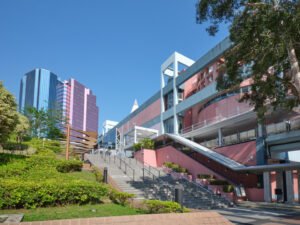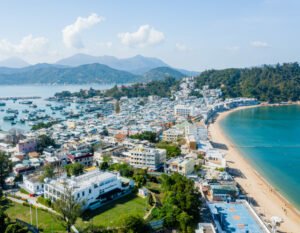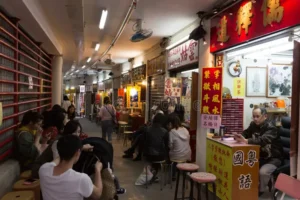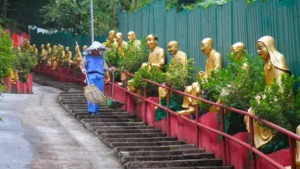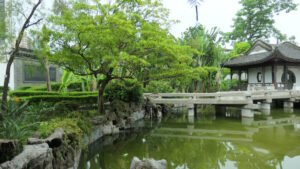Wing Chun Hong Kong & Travel
Planning a trip to Hong Kong is an exciting endeavour!
This dynamic city offers a blend of traditional culture, modern attractions, and diverse experiences. We have been travelling to Hong Kong for over 30 years on both wing Chun and holiday trips and offer a little guidance to would be travellers. Here’s we have tries to give a step-by-step guide to help you plan your trip effectively:
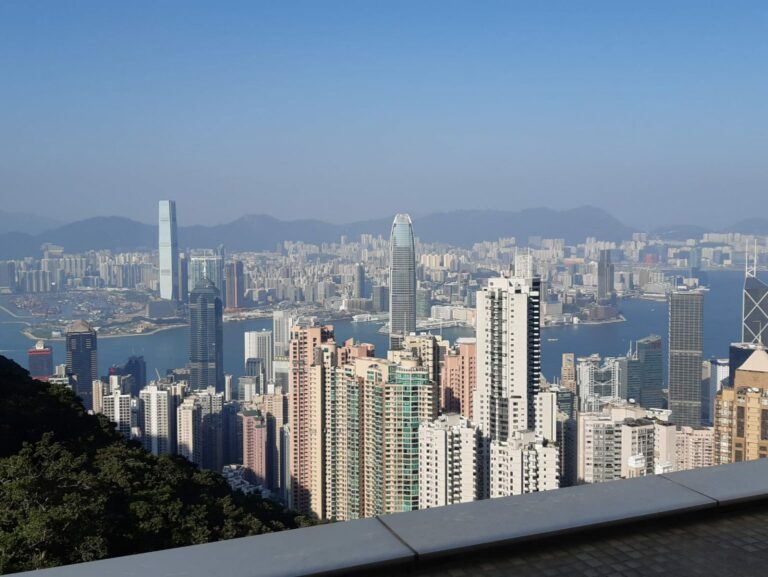
Select Your Travel Dates: Decide on the dates of your trip, considering factors like weather, local events, and personal preferences. Hong Kong has a subtropical climate, with October to December being the most pleasant months. So, when is the best time to visit Hong Kong depends on your preferences for weather, events, and crowd levels. Here are a few factors to consider for each season:
- Autumn (October to December):
- Weather: This is considered the most pleasant time to visit, with cooler temperatures and lower humidity. It’s great for outdoor activities and exploring the city.
- Events: The city hosts various festivals and events during this period, including the Mid-Autumn Festival with its beautiful lantern displays.
- Winter (January to February):
- Weather: While winters are mild, it can get chilly, especially in the evenings. It’s still a comfortable time to explore the city.
- Events: Chinese New Year falls within this period (late January to early February), bringing vibrant celebrations, parades, and fireworks.
- Spring (March to May):
- Weather: Spring is another pleasant time to visit, with mild temperatures and relatively low humidity. It’s a great time for outdoor activities and sightseeing.
- Events: The Hong Kong Arts Festival usually takes place during March, showcasing a wide range of cultural performances.
- Summer (June to August):
- Weather: Summer in Hong Kong is hot and humid, with occasional typhoons and heavy rain. This might not be the most comfortable time for outdoor activities.
- Events: Despite the weather, summer hosts various events and festivals, including Dragon Boat Festival and local temple fairs.
Travel Tips:
- Consider the weather and your tolerance for heat and humidity. If you prefer cooler temperatures, avoid the peak of summer.
- Check the academic calendar: July and August are peak months for family travel due to school vacations.
- Hotel rates might be lower during the hotter and more humid months (July and August).
- If you’re interested in shopping, the summer months coincide with the city’s annual sales season.
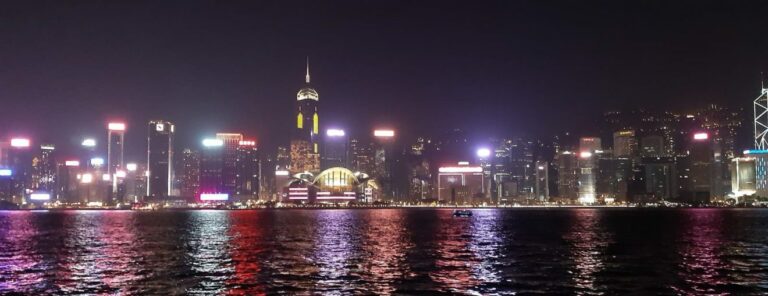
Booking Your Flights: Search for flights to Hong Kong International Airport (HKG). Compare prices from different airlines and booking platforms to find the best deal. Consider layovers and travel times and remember that the time of year can affect your cost when selecting your flights.
Finding Accommodation in Hong Kong: Choose your accommodation based on your budget and preferences. Hong Kong offers a range of options, from luxury hotels to budget hostels. Popular areas to stay include Tsim Sha Tsui, Yau Ma Tei, Jordan, Monk Kok, Central, and Causeway Bay., These areas are great travel hubs to get around tie sites of Hong Kong.
Using Local Transportation: Hong Kong’s public transportation system is efficient and extensive and relatively cheap. The MTR (Mass Transit Railway) is the backbone of the city’s transportation. The best way is to consider purchasing an Octopus Card, this can be purchased at the Airport Train Station or any TMR Station which provides access to MTR, buses, trams, and even some shops.
What Plug Will I need for Electrical Outlets: Hong Kong uses a Type G electrical outlet (UK) with a voltage of 220-240V. If your devices have a different plug type or voltage, you might need an adapter or voltage converter.
What is the Local Etiquette: Research local customs and etiquette to show respect to the culture and people of Hong Kong. For example, it’s customary to offer and accept items with both hands, and tipping is appreciated in restaurants.
Remember that you can tailor your trip to Hong Kong to your interests, whether it’s exploring Wing Chun, savouring local cuisine, or embracing the city’s cultural diversity. So that you can enjoy your journey to this captivating destination!
Places to visit in Hong Kong and want to visit the spiritual home of Wing Chun / Ving Tsun?
Visiting the Cultural home of Wing Chun, the VTAA
Visiting the Ving Tsun Athletic Association (VTAA) in Hong Kong is a fantastic opportunity to immerse yourself in the world of Wing Chun Kung Fu. The VTAA is an important institution in the Wing Chun community and holds a significant place in the history and development of the art. Here’s a guide to help you make the most of your visit:
Location:
The VTAA is in the Mong Kok area of Kowloon, Hong Kong. Its address is: Ving Tsun Athletic Association Hong Kong Culture Building, 4/F Kowloon, Cheung Ling Mansion, Mong Kok, Hong Kong.
Opening Hours & Training Sessions: The VTAA usually operates on specific training schedules and class timings. It’s advisable to contact them in advance or check their official website for the most up-to-date information regarding training times and visiting hours. We would recommend the Ip Ching Family classes which are held on Wednesday nights 6.00- 9.45pm and Saturday nights from 6.00 – 9.45pm
The VTAA offers training sessions for practitioners of all skill levels, from beginners to advanced students. You might have the chance to observe or participate in these training sessions, depending on your experience and the schedule during your visit. When visiting the VTAA, it’s important to show respect to the instructors, students, and the facility itself. Follow any guidelines or rules provided by the VTAA
What to Wear: Wearing comfortable clothing is recommended, as you might have the opportunity to observe or participate in training. If you’re planning to actively participate, ensure that you wear appropriate training attire. While some instructors and students at the VTAA might speak English, it’s a good idea to familiarise yourself with common Wing Chun terminology and basic Cantonese phrases to facilitate communication.
Photography and Recording within the VTAA: Respect any rules regarding photography and recording within the VTAA premises. Some places might allow it, while others might have restrictions to preserve the training environment. Remember that the VTAA is a place of learning and practice, so approach your visit with a genuine interest in Wing Chun and a respectful attitude. Engaging with instructors, students, and the rich history of Wing Chun at the VTAA can be an enlightening and fulfilling experience.
Want to get out and about in Hong Kong, visit the site and spend time exploring?
Why not look at some of the best sites to visit on your trip with our list of must-see attractions.
- Victoria Peak (The Peak): Enjoy panoramic views of the city’s skyline and Victoria Harbour from this iconic vantage point. Take the Peak Tram to the top and explore Sky Terrace 428 for breathtaking vistas.

- Victoria Harbour: Marvel at the stunning skyline along Victoria Harbour, especially during the Symphony of Lights, a nightly multimedia light and sound show.

- Hong Kong Disneyland: Immerse yourself in the magical world of Disney characters and attractions. The park offers fun for visitors of all ages, from thrilling rides to enchanting parades.

- Tsim Sha Tsui Promenade: Stroll along this waterfront promenade for great views of the skyline. The Avenue of Stars pays tribute to Hong Kong’s film industry with statues of famous stars.

- Wong Tai Sin Temple: Experience the spirituality of Hong Kong at this colourful Taoist temple. Wong Tai Sin Temple is known for its fortune-telling practice and stunning architecture.

- Nan Lian Garden and Chi Lin Nunnery: Escape the urban hustle and visit this serene oasis. The classical Chinese garden and Buddhist nunnery provide a peaceful respite.

- Temple Street Night Market: Indulge in Hong Kong’s vibrant street market scene at Temple Street. You’ll find an array of goods, from trinkets and clothing to street food stalls.

- Ocean Park: A marine-themed amusement park offering thrilling rides, animal exhibits, and marine life encounters. It’s a popular family destination.

- Man Mo Temple: Explore this historic temple dedicated to the God of Literature (Man) and the God of War (Mo). Admire the incense coils hanging from the ceiling.

- Lantau Island: Discover the tranquillity of Lantau Island, home to attractions like the Tian Tan Buddha (Big Buddha), Po Lin Monastery, and Ngong Ping 360 cable car ride.

- Star Ferry: Take a ride on the historic Star Ferry across Victoria Harbour. It’s an affordable way to enjoy breathtaking views of both sides of the city.

- Central District: The heart of Hong Kong’s business district, Central offers a blend of modern skyscrapers, luxury shopping malls like IFC Mall, and historical sites like the Central-Mid-Levels Escalator.

- Lan Kwai Fong: This popular nightlife district in Central comes alive in the evenings with a variety of restaurants, bars, and clubs. It’s a hub for socializing and entertainment.

- Stanley Market: Located on the south side of Hong Kong Island, this market is famous for its selection of clothing, accessories, and souvenirs. It’s a great place to shop for unique items.

- Mong Kok: Experience the vibrant chaos of Mong Kok, known for its bustling street markets, shopping streets, and diverse street food options.

- Hong Kong Museum of History: Explore Hong Kong’s past through interactive exhibits that cover its culture, history, and development. It’s a great place to learn about the city’s evolution.

- Kowloon Walled City Park: Once a lawless urban enclave, this park now offers a glimpse into Hong Kong’s past with restored historical relics and tranquil gardens.

- Tai O Fishing Village: On Lantau Island, Tai O is a traditional fishing village known for its stilt houses, seafood markets, and scenic boat rides through its waterways.

- Sai Kung Peninsula: Escape the urban environment and head to Sai Kung for hiking, water sports, and seafood dining. The area is known for its natural beauty and picturesque coastline.

- Hong Kong Science Museum: Ideal for families, this museum offers interactive exhibits covering a wide range of scientific topics, making learning fun for all ages.

- Cheung Chau Island: Take a ferry to this quaint island for a taste of traditional Hong Kong life. Explore narrow streets, visit local temples, and enjoy fresh seafood.

- Wong Tai Sin Fortune-Telling Street: Adjacent to Wong Tai Sin Temple, this street is lined with fortune tellers offering insights through tarot cards, palmistry, and other divination methods.

- Ten Thousand Buddhas Monastery (Man Fat Tsz) Sha Tin is a fascinating and unique destination to visit in Hong Kong. Despite its name, this complex houses around 13,000 Buddha statues and offers a serene and spiritual experience. Here’s what you need to know about visiting the Ten Thousand Buddhas Monastery.

- Kowloon Park: An Oasis in the Heart of the City: Kowloon Park is a lush oasis nestled amidst the bustling urban landscape of Kowloon, Hong Kong. This expansive park offers a serene escape from the city’s hustle and bustle, providing both locals and visitors with a tranquil environment to relax, exercise, watch or practise Kung fu and appreciate nature.


